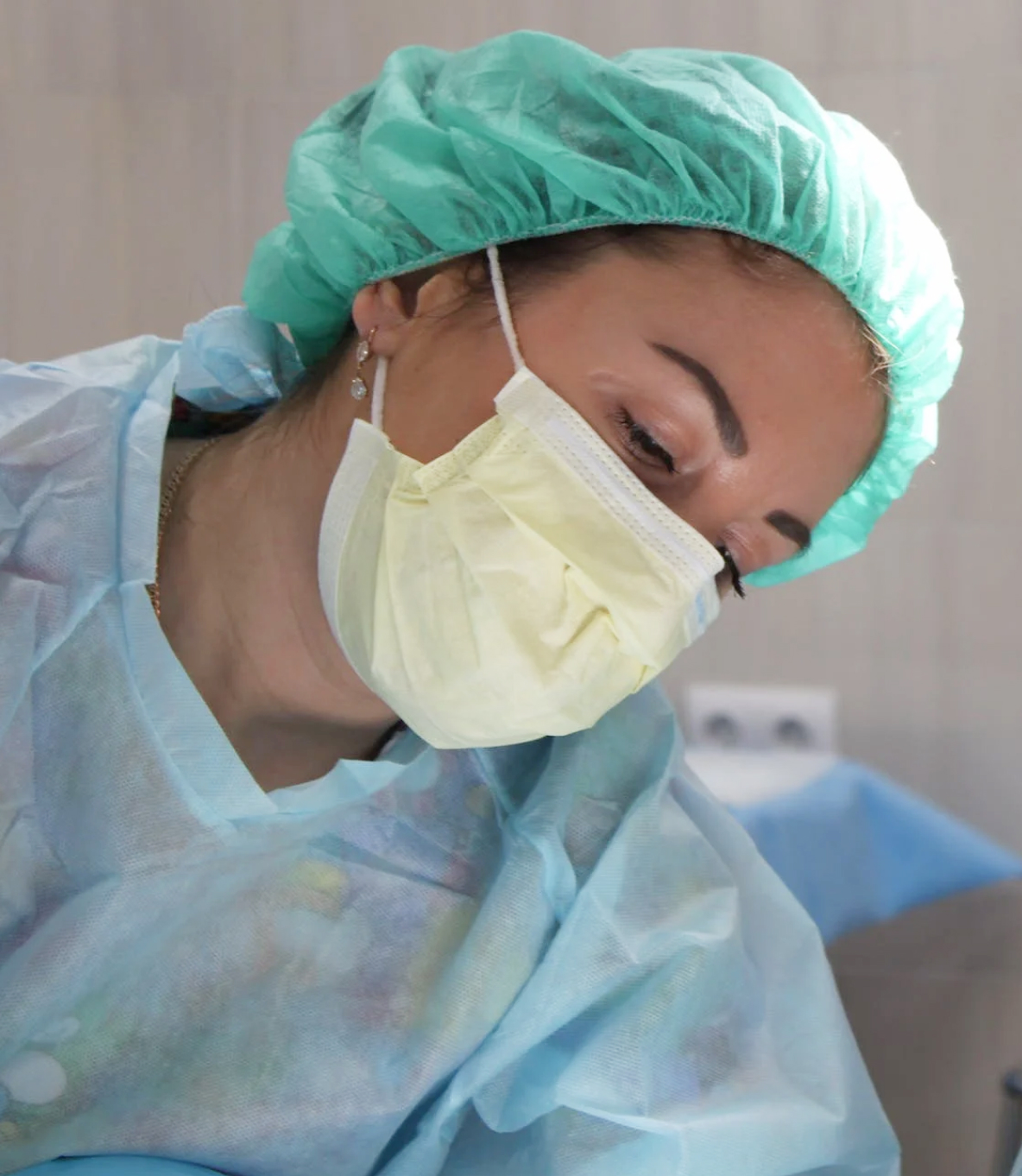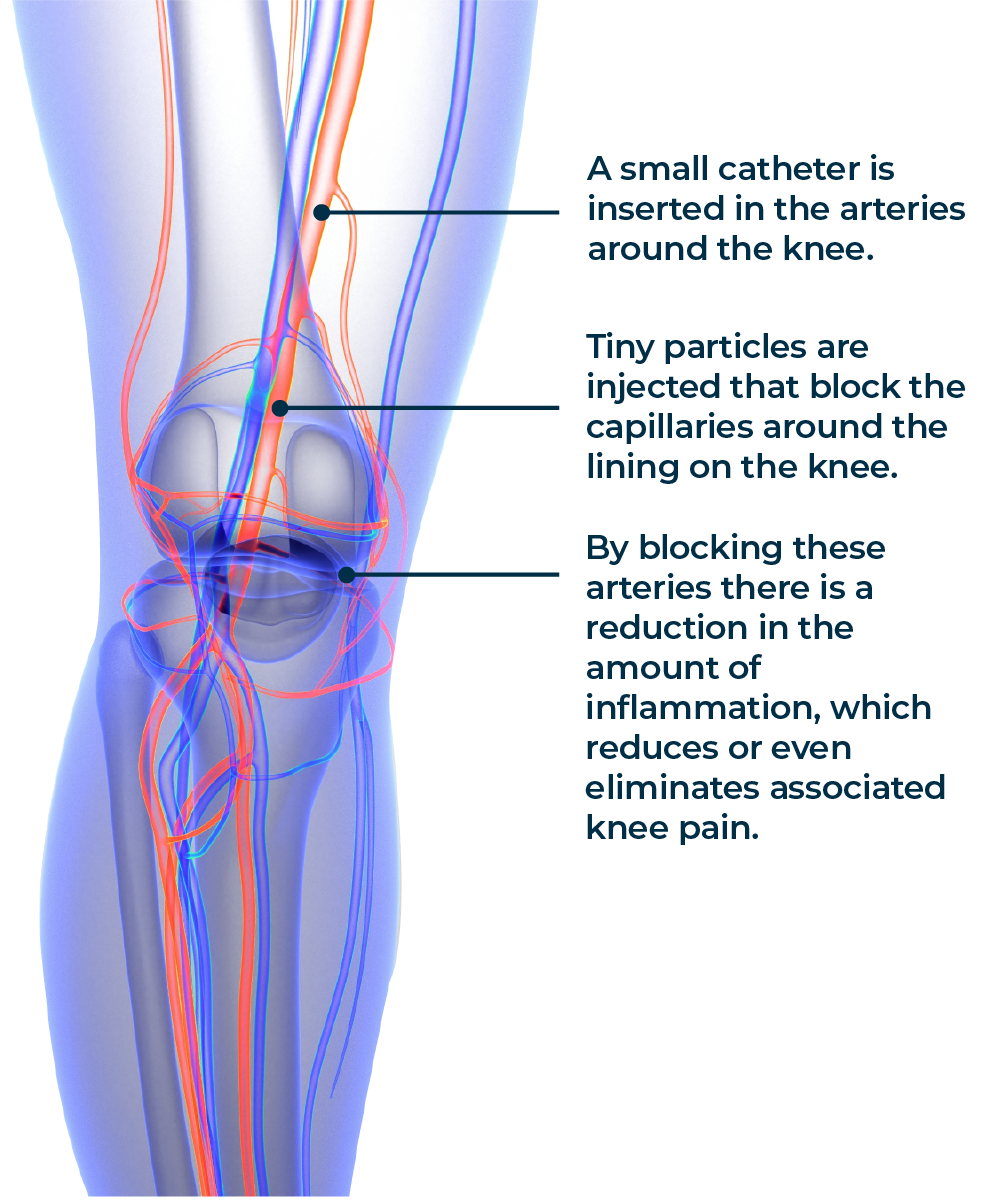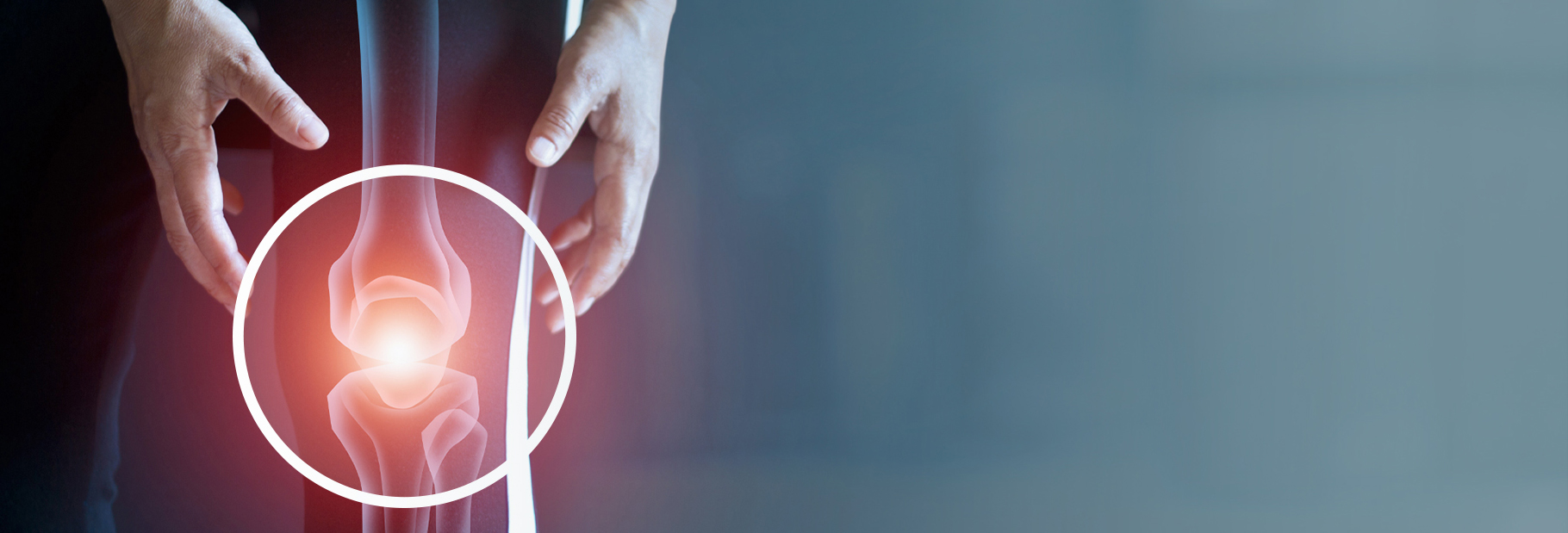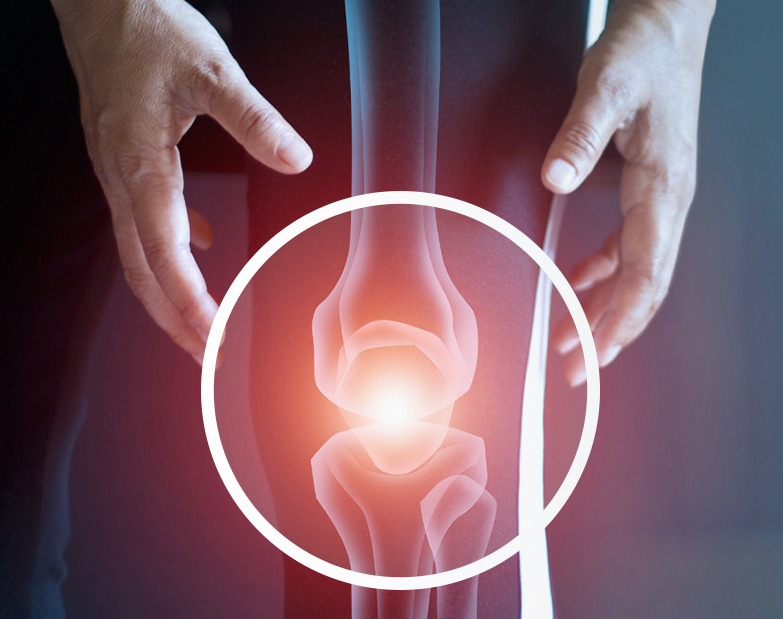Osteoarthritis in Your Knee
Surgery Is Not Your Only Option
Genicular artery embolization (GAE) is a novel minimally invasive procedure providing immediate and longterm pain relief for patients with osteoarthritis (OA) of the knee. The pain experienced by patients with osteoarthritis is due to abnormal blood vessels supplying the lining of the knee joint and contributing to ongoing inflammation. The GAE procedure works by blocking these abnormal blood vessels, causing the inflammation to subside.

Request a Consult

We are dedicated to vascular health, patient satisfaction, and excellent results.
Geniculate Artery Embolization (GAE) is a non-surgical alternative for patients with knee pain due to osteoarthritis who have failed conservative therapy or treatment.
- No longer getting pain relief with medication.
- Knee injections do not provide relief.
- Putting off having a full knee replacement.
- Not eligible for a full knee replacement.
- Experienced persistent knee pain for four to six months.
- Quality of life is deteriorated due to your knee pain.

Advantages of a GAE Procedure
- Minimally invasive: GAE is a minimally invasive procedure, which means that it results in less pain and scarring than traditional surgery.
- Short recovery time: Patients are able to go home the same day as the procedure and return to their normal activities within a week.
- Effective in reducing pain: GAE is effective in reducing knee pain and improving function. Studies have shown that up to 85% of patients experience significant pain relief after GAE.
- Can delay or prevent the need for knee replacement surgery: GAE can be a good option for patients who are not ready for knee replacement surgery or who are not good candidates for surgery.
GAE can help to relieve pain and improve function, which can delay the need for surgery for several years or even indefinitely.
I highly recommend them!

The following patients may benefit from GAE treatment:
Men and women 40 to 80 years old with knee pain due to OA.
- Patients with moderate to severe knee pain due to OA who have failed to respond to other treatments, such as physical therapy, medication, and injections.
- Patients who are not ready for or are not good candidates for knee replacement surgery.
- Patients who are younger and more active, as GAE can help to delay the need for knee replacement surgery.
- Patients with other medical conditions that make them high-risk for surgery.

What is a GAE Procedure?
Geniculate artery embolization (GAE) is a minimally invasive procedure to reduce knee pain in patients with osteoarthritis (OA). It involves blocking the blood supply to the geniculate arteries, which supply blood to the lining of the knee joint.
GAE is performed under fluoroscopy (X-ray guidance). A thin tube called a catheter is inserted through a small incision in the groin and threaded up to the geniculate arteries. Tiny particles are then injected into the arteries to block blood flow.
After GAE, the knee joint may be swollen and sore for a few days. Most patients are able to go home the same day as the procedure and return to their normal activities within a week.
GAE is a safe and effective procedure for reducing knee pain in patients with OA. It is a good option for patients who have failed to respond to other treatments, such as physical therapy, medication, and injections.


